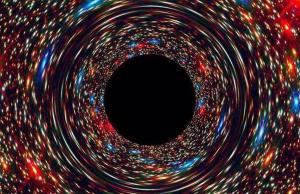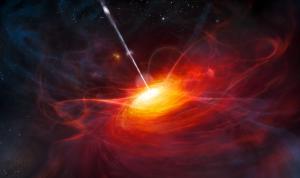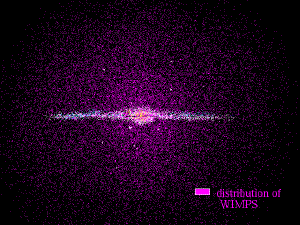Blog
Stupendously Stupendous
23 January 2021
 NASA, ESA, and D. Coe, J. Anders
NASA, ESA, and D. Coe, J. AndersOur universe contains some enormous black holes. The supermassive black hole in the center of our galaxy has a mass of 4 million Suns, but it’s rather small as galactic black holes go. Many galactic black holes have a billion solar masses, and the most massive known black hole is estimated to have a mass of nearly 70 billion Suns.1 But just how big can a black hole get?
 ESO/M. Kornmesser
ESO/M. KornmesserIn order for a black hole to get really massive, it needs to consume a great deal of matter early in its life. If it consumes matter slowly, then its surrounding galaxy will have settled into place, and the universe will have expanded so that there isn’t much more matter the black hole can capture. But when a black hole consumes a great deal of matter quickly, the matter gets super hot and tends to push other matter away, thus making it more difficult for the black hole to grow.
Based on observations of the largest black holes and computer simulations of how black holes form, it is thought that the upper mass limit for galactic black holes is around 100 billion solar masses. But new research suggests the mass limit could be much higher.2
The study notes that while galactic black holes probably do have a hundred billion solar mass limit, larger black holes could have formed independently during the early moments of the universe. These primordial black holes could have masses more than a million times greater than the largest galactic black holes. The research team calls them Stupendously Large Black Holes or SLABs.
The idea of primordial black holes has been around for a long time. They have been proposed as a solution to everything from dark matter to why we haven’t yet discovered the hypothetical ninth planet in our solar system. But theoretical models have suggested that primordial black holes would be much smaller than even stellar-mass black holes, formed from tiny density fluctuations in the early universe. But this new study suggests that dark matter and other factors could cause some of them to grow stupendously large.
 Davison Soper
Davison SoperIf the early universe was rich in dark matter, particularly a form of dark matter known as Weakly Interacting Massive Particles (WIMPs), then a primordial black hole could consume dark matter to grow quickly. Since dark matter doesn’t interact strongly with light, the captured dark matter wouldn’t emit much light or heat to dampen the growth rate. As a result, these black holes could be huge even before the universe cooled and galaxies formed. The upper mass limit of SLABs would depend upon how WIMP dark matter interacts with itself, so if we discover any SLABs, it could help us understand dark matter.
We haven’t yet observed any Stupendously Large Black Holes. They could be hiding in the hearts of distant galaxies, but they could also be lurking in the vast space between galactic clusters. Or they might not exist. But it’s worth looking for them, because finding one would be a truly stupendous discovery.
Shemmer, O., et al. “Near-infrared spectroscopy of high-redshift active galactic nuclei. I. A metallicity-accretion rate relationship.” The Astrophysical Journal 614.2 (2004): 547. ↩︎
Carr, Bernard, Florian Kühnel, and Luca Visinelli. “Constraints on stupendously large black holes.” Monthly Notices of the Royal Astronomical Society 501.2 (2021): 2029-2043. ↩︎